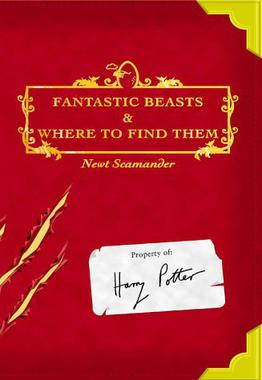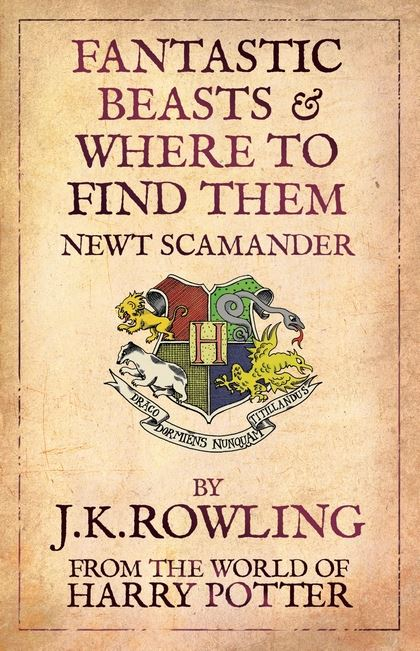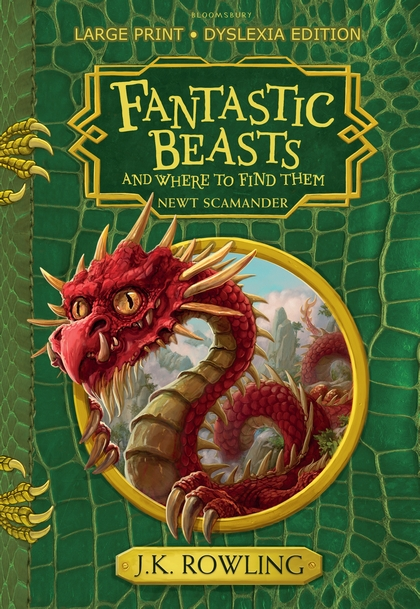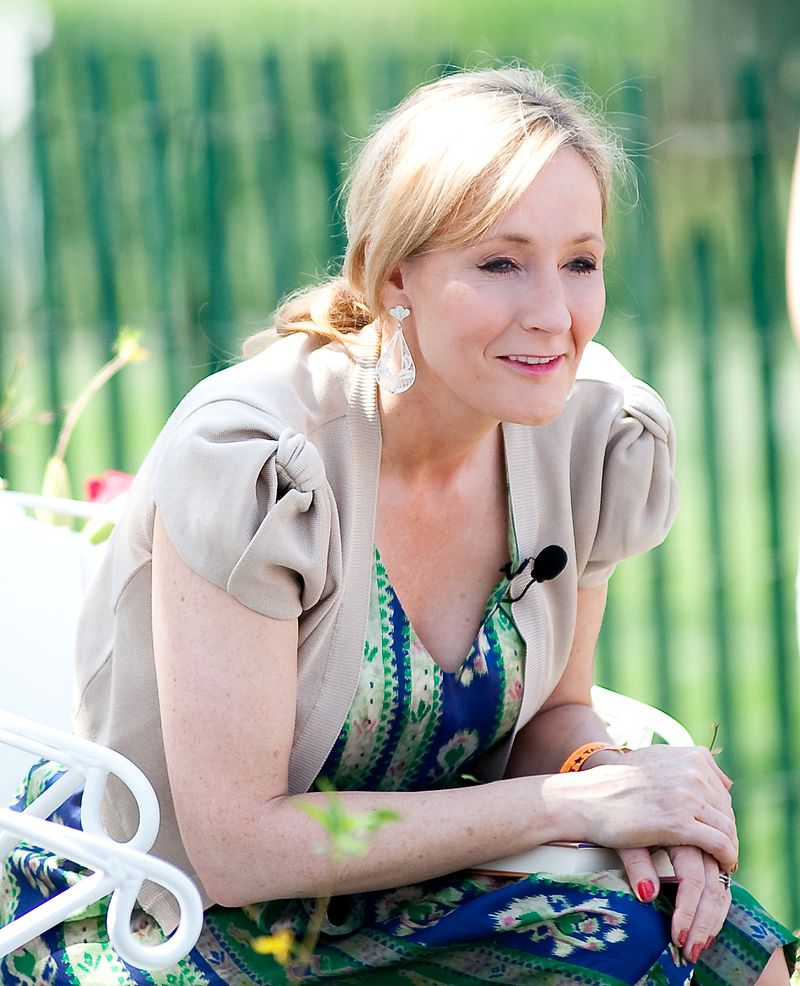Title of the work
Country of the First Edition
Country/countries of popularity
Original Language
First Edition Date
First Edition Details
J. K. Rowling, Fantastic Beasts and Where to Find Them. London: Bloomsbury, 2001, 128 pp.
ISBN
Official Website
Pottermore (accessed: August 3, 2018)
Genre
Bestiary*
Fantasy fiction
Textbooks
Target Audience
Crossover (As we consider that Harry Potter books are crossover literature for all ages, this companion publication is not different. It is clearly for fans of the series; without the Potter universe, )
Cover



Covers from 2001, 2009, 2017 editions.
Courtesy of Bloomsbury Publishing.
Author of the Entry:
Anna Mik, University of Warsaw, anna.m.mik@gmail.com
Peer-reviewer of the Entry:
Elżbieta Olechowska, University of Warsaw, elzbieta.olechowska@gmail.com
Susan Deacy, University of Roehampton, s.deacy@roehampton.ac.uk

Portrait of J. K. Rowling, photographed by Daniel Ogren on April 5, 2010. The file is licensed under the Creative Commons Attribution-Share Alike (accessed: May 25, 2018).
J. K. Rowling
, b. 1965
(Author, Illustrator)
Joanne Kathleen Rowling, was born July 31, 1965 in Yate, Gloucestershire, England. She graduated from the University of Exeter with a degree in French and Classics, she is considered a writer with classical background. After publishing the first Harry Potter book in 1997, she gradually became the best known author of all time.
The Harry Potter septology (1997–2007), is one of the most successful and popular series in the history of children’s literature (Harry Potter and the Philosopher’s Stone sold in 107 million copies). It may be argued that, from the very beginning, the author herself had to expand this world, fill the gaps, and explain all the rules– not only by discussing some issues (later on – mainly on Twitter) or giving guidelines in the interviews but by creating her website Pottermore. Once it was an online platform, where fans could read the series simultaneously with Rowling’s commentary and additions. Now it serves more as commercial space, although Rowling still adds some new elements (e. g. the short history of magical schools in USA).
To give to the devoted fans of Harry something that would allow them to feel the magical bond with the world they want to be a part of she created three books that now exist in both the secondary world of Hogwarts and the primary world where the reader can have a copy in their own hands.
HP Series Spin-offs:
Quidditch Through the Ages by Kennilworthy Whisp (2001), Fantastic Beasts and Where to Find Them by Newton Scamander (2001) and The Tales of Beedle the Bard (2007)* are allegedly copies of books from the world of Harry Potter which include different literary genres and publication formats: history of sport, bestiaries, and collections of fairy tales. These books are not part of the septology, but they provide complementary information about sports, animals and animal-like creatures, and fairy-tales of the Wizarding World. Additionally, they can be interpreted as a device to help convince readers of the reality of the magical world. In these three books, as in the series sensu stricto, J. K. Rowling plays on various levels with great literary traditions, using one of the many features of postmodern literature.
Bio prepared by Anna Mik, University of Warsaw, anna.m.mik@gmail.com
* Hand-written copies were released in 2007, printed ones in 2008.
Adaptations
Fantastic Beasts… was an inspiration for making a movie that launched a five-part series, telling the story of the book’s author Newt Scamander. It is also chronologically a prequel to the whole Harry Potter series. The first movie (under the same title) was released in 2016, directed by David Yates. The screenplay was written by J. K. Rowling herself. See under separate entry.
Translation
Multiple translations.
Summary
The author plays with the tradition of bestiaries in this book and introduces the audience to "Wizard–Magical Creatures Studies." Her name does not appear on the book's cover, and the work is credited to "Newt Scamander" who, in the Harry Potter universe, wrote this textbook – we see it on Harry’s supply list for his first year. It contains the history of Magizoology and describes 85 magical species from all around the world. In the edition from 2017, Rowling added a preface from Newt Scamander himself, explaining why there are new creatures in the bestiary (she added seven that are native to America). This was, of course, to make the book more attractive to the American public already exposed to the movie, which is loosely based on the book and takes place in the US in the 1920s.
Analysis
The cover of the book's first edition (in our universe) appears to be marked by the claws of an unidentified animal, which can be a warning that even though humans tried to study magical creatures, they did not tame them. So what we read is only what we surmise – they still are and always will be out of our range.
The copy which served as the basis for our edition belongs to Harry Potter. On the title page we can read an interesting “handwritten” dialogue between the Hogwarts students Ron and Hermione (in different “handwriting” indicating that students wrote the dialogue):
Ron: Shared by Ron Weasley, because his fell apart.
Hermione: Why don't you buy a new one then?
Ron: Write on your own book, Hermione.
Hermione: You bought all those dungbombs on Saturday. You could have bought a new book instead.
Ron: Dungbombs rule (Rowling, 2009a, p. i).
On the next pages and further, we see various drawings and doodles, sometimes comments or corrections detailing their (Ron’s and Hermione’s) experiences with some of the beasts in the book. Here we also read Dumbledore’s introduction in which he states: “The amusing creatures described hereafter are fictional and cannot hurt you” (Rowling, 2009, p. xviii). We also learn that the book cost two Galleons at Flourish and Blotts, and that it was published in Diagon Alley in London.
There are only four types of beasts in Harry Potter series that we can for sure call mythical: the Centaurs, Merpeople, Phoenix, and Cerberus. Using their problematic status (whether they are called ‘a beast’ or not), Rowling tries to answer some questions asked in Fantastic Beasts… and to bring to the reader’s attention the fact that humans are not the only important beings in the world of magic.
All profits from selling the three books went to the Comic Relief Foundation. They were released in order to show gratitude towards the devoted fans who could from now on hold in their hands an artifact from the magical world, feel better informed about it, and be almost part of it. These books expand our knowledge about Potterian magic in three areas: sports, fauna, and folklore.
Further Reading
Official website for J. K. Rowling’s fans (accessed: August 3, 2018).
Green, Amy M., “Revealing Discrimination: Social Hierarchy and the Exclusion/ Enslavement of the Other in the Harry Potter Novels”, The Looking Glass: New Perspectives on Children’s Literature, 13.3 (2009).
Mik, Anna, “Magizoology: the magical creatures studies J. K. Rowling’s postulates on animals in “Fantastic Beasts and Where to Find Them” on examples from Graeco-Roman mythology”, Maska 33 (2017): 21–34. Also available online (accessed: August 3, 2018).
Schollenberger, Justyna, “Literackie ożywienie bestii – intertekstualne wątki bestiariuszy w Harrym Potterze [Literary Revival of the Beast – Intertextual Aspects of the Harry Potter’s Bestiaries]” in Weronika Kostecka, Maciej Skowera, eds., Harry Potter. Fenomen społeczny – Zjawisko literackie – Ikona popkultury [Harry Potter. Social and Literary Phenomenon – Pop Culture Icon], Warszawa: Wydawnictwo SBP, 2014, 99–110.
Addenda
J. K. Rowling herself drew all the illustrations for the first and for the 2009 edition. In 2017 they were substituted by the bestiary-like illustrations.
Rowling plays here with the concept of the bestiary that is linked to the world of Harry Potter. She has created her own type of postmodern bestiary, loosely based on the "traditional" one.


